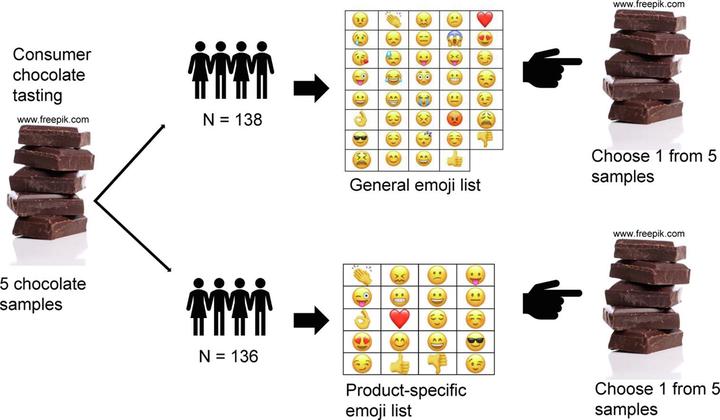Comparing a product-specific versus a general emoji list to measure consumers’ emotional associations with chocolate and predict food choice

Abstract
Emoji have been proposed as a way to get additional insights in how consumers perceive food products. Recent works have indicated that emoji are able to provide distinctive emotional associations with food products, regardless of whether one is using the check-all-that-apply (CATA) or the rate-all-that-apply (RATA) scaling approach. Typically, in examining emotional associations one can work with either a general list which can be used with all food products or a product-specific emotion list. To date, a comparison between the performance of a general and product-specific emoji list with adults is lacking. Moreover, it is unclear to which extent emotional data of emoji help to better predict the actual food choice of adult consumers. Using five samples of chocolates, this study compared the use of a general list of 39 emoji with a product-specific list of 20 emoji (based upon input of 32 consumers). In total, 138 consumers assessed the samples using the general list while 136 consumers evaluated the samples with the product-specific emoji list. The RATA approach was used for the evaluation of the samples and the actual food choice was registered as participants received a snack portion of the chosen sample to take home. Results indicated that, considering the frequency of selection, 10 emoji discriminated between the samples for both the general and product-specific lists. Similar results were obtained when considering the rating intensities. Including emoji did not lead to a significant increase in the food choice prediction regardless the type of list used. However, emoji data obtained from the product-specific emoji list was able to predict the food choice as accurate as the liking data when using the RATA intensity scores. This study suggests that both general and product-specific emoji lists are able to generate distinguishing emotional profiles for chocolate samples. While further research is necessary with other food products and measurement methods (e.g. CATA), this study proposes that emoji measurements might be an alternative to liking data in order to be better understand of consumers’ food choice.